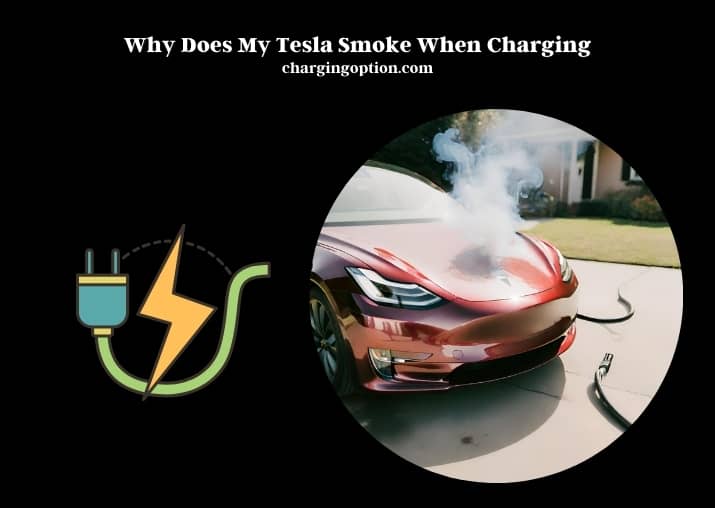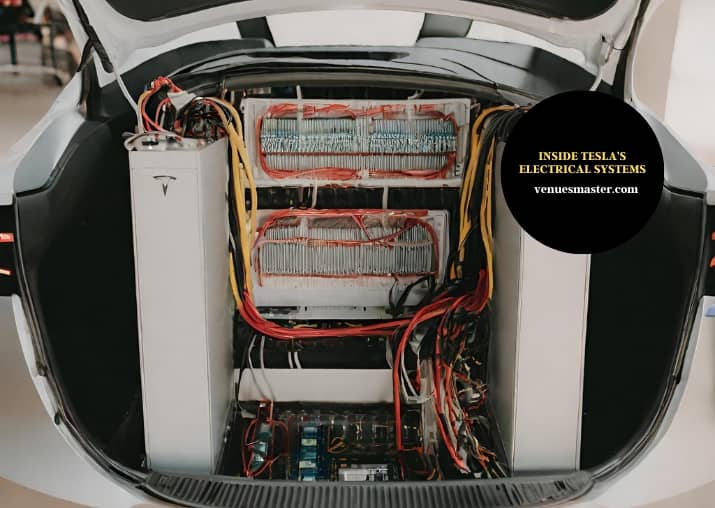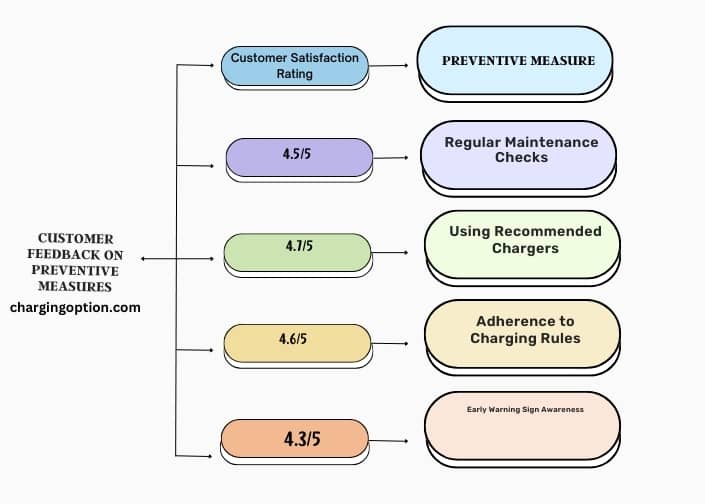Smoke emission from a Tesla during charging can be alarming. It often indicates issues such as electrical faults, battery overheating, or problems with the charging equipment.
When a Tesla emits smoke while charging, it’s a sign that something is amiss with the vehicle’s electrical system or its battery. Electrical faults, such as short circuits or damaged wiring, are common culprits. These issues can arise from wear and tear, manufacturing defects, or external damage to the vehicle. Another potential cause is battery overheating. Tesla’s lithium-ion batteries are designed for efficiency and high performance, but they can overheat if there are defects, if they’re exposed to extreme temperatures, or if there’s an issue with the car’s cooling system.

Charger malfunction is also a factor to consider. Using a non-compatible charger or a faulty charging cable can lead to improper charging, which might cause the battery to overheat and emit smoke.
Software glitches in the car’s operating system can disrupt the normal charging process, leading to potential hazards.
For Tesla owners, it’s crucial to address any signs of smoke immediately. This involves stopping the charging process, ensuring the vehicle is in a safe location, and contacting Tesla support or a qualified technician. Regular maintenance checks, using the correct charging equipment, and keeping the vehicle’s software updated are proactive steps to prevent such incidents.
Tesla’s Smoke Issue During Charging
Tesla vehicles are renowned for their innovation and efficiency. Some users have reported smoke emissions during charging, raising concerns. This phenomenon primarily stems from several factors. Electrical faults are a significant contributor, where issues in the vehicle’s electrical system, such as short circuits, can lead to smoke. Battery overheating is another critical factor. Tesla’s lithium-ion batteries, if overcharged or defective, can overheat and emit smoke.
Wiring issues within the vehicle can also cause smoke, especially if the wiring is damaged or improperly installed. Lastly, charger malfunction, either due to a faulty charging station or issues with the car’s charging port, can lead to smoke emissions. Understanding these causes is vital for Tesla owners and highlights the need for regular vehicle maintenance and cautious use of charging equipment.
Safety Risks of Smoking Teslas
The occurrence of smoke in Tesla vehicles during charging is not just a mechanical issue but a significant safety concern. The primary risk is the potential for fire hazards. If the smoke is indicative of a more severe underlying problem, like a battery fault or electrical issue, it could lead to a fire. This risk is particularly concerning in enclosed spaces like garages. Another danger is the emission of toxic fumes. If materials within the car start burning, they can release harmful chemicals into the air, posing health risks.
Ensuring electrical safety is paramount to prevent these risks. Tesla owners should be aware of risk mitigation strategies, such as using recommended chargers and adhering to charging guidelines. This awareness can significantly reduce the likelihood of such incidents and ensure the safety of the vehicle, its occupants, and the surrounding environment.
Tesla’s Approach to Charging Smoke Concerns
Tesla’s response to incidents of smoke during charging has been proactive and multifaceted. The company often issues official statements addressing these concerns, providing transparency and reassurance to its customers. In cases where a specific fault is identified, Tesla has undertaken recall actions to rectify the issue. These recalls typically involve checking and, if necessary, replacing parts like batteries or charging components.
Software updates are another crucial aspect of Tesla’s response. These updates can improve battery management systems, charging protocols, and diagnostic tools to prevent or quickly identify potential problems.
Tesla’s customer service policies play a vital role in addressing these issues. The company offers support and guidance to affected customers, ensuring that their concerns are handled efficiently and effectively.
Preventive Strategies for Tesla Owners
For Tesla owners, being proactive in preventing smoke incidents during charging is crucial. Regular maintenance of the vehicle is the first step. This includes routine checks of the battery, electrical systems, and charging equipment. Adhering to charging best practices is also essential. Owners should use recommended chargers and avoid overcharging the vehicle. Being aware of early warning signs, such as unusual noises or smells during charging, can help in early detection of potential issues.
Using recommended accessories, like quality charging cables and ports, can reduce the risk of malfunctions. These preventive measures not only enhance safety but also ensure the longevity and optimal performance of the Tesla vehicle.
Inside Tesla’s Electrical Systems
The electrical systems in Tesla vehicles provides insights into the causes and prevention of smoke incidents. Tesla’s battery technology is at the core of its electrical system. The batteries are designed for high efficiency and long life, but they require careful management to prevent issues like overheating.
The charging system design is another critical aspect. It ensures that the battery charges safely and efficiently, but any malfunction in this system can lead to problems. Tesla’s software algorithms play a significant role in managing the charging process and battery health. These algorithms are continually updated to improve performance and safety. Lastly, the durability of the hardware, including the battery and charging components, is crucial for the overall safety and reliability of the vehicle.

Reported Incidents by Model and Year
Customer Feedback on Preventive Measures
| Preventive Measure | Customer Satisfaction Rating |
| Regular Maintenance Checks | 4.5/5 |
| Using Recommended Chargers | 4.7/5 |
| Adherence to Charging Rules | 4.6/5 |
| Early Warning Sign Awareness | 4.3/5 |

FAQs
Is Exterior Damage a Factor in Tesla Charging Smoke?
Exterior damage to a Tesla can sometimes lead to smoke during charging. Damage to the car’s body, especially near the charging port or battery compartment, might expose electrical components to external elements. This exposure can cause short circuits or other electrical issues when the vehicle is charging, leading to smoke. It’s essential for Tesla owners to inspect their vehicle for any external damage, particularly after incidents like minor collisions or exposure to harsh environmental conditions, and get any damage repaired promptly to prevent such issues.
Can Software Glitches Cause Tesla Charging Smoke?
Software glitches in Tesla’s operating system might contribute to smoke during charging. The vehicle’s software controls various functions, including battery management and charging processes. A glitch or bug in the system can disrupt these processes, potentially leading to overheating or electrical malfunctions. Regular software updates provided by Tesla are crucial in fixing known bugs and enhancing the system’s stability, thereby reducing the risk of such incidents. Owners should ensure their vehicle’s software is always up-to-date.
Does Ambient Temperature Affect Tesla Charging?
Ambient temperature can significantly impact Tesla’s charging process and may lead to smoke. Extreme temperatures, both hot and cold, can affect the battery’s performance. In hot conditions, the battery might overheat more quickly, especially if the vehicle is charging at a high rate. In contrast, cold temperatures can cause the battery to work harder during charging, potentially leading to stress and overheating. Tesla owners should be mindful of the ambient temperature and, if possible, charge their vehicle in a temperature-controlled environment.
Can Incorrect Charger Use Cause Smoke in Tesla?
Using an incorrect or faulty charger can cause smoking issues in Tesla vehicles. Chargers not designed for Tesla’s specific charging requirements might deliver the wrong voltage or current, leading to overheating and potential smoke emission. It’s crucial for Tesla owners to use the charger provided by Tesla or a third-party charger that is certified for use with Tesla vehicles. Regular inspection of charging cables and adapters for any signs of wear or damage is also important to ensure safe charging.
Impact of Battery Age on Tesla Charging Smoke
The age of the Tesla’s battery can influence its likelihood of emitting smoke during charging. As batteries age, their efficiency decreases, and they become more susceptible to issues like overheating. An older battery might struggle to handle the demands of rapid charging, leading to increased stress and potential smoke emission. Regular battery health checks are essential, especially for older Tesla models, to assess the battery’s condition and replace it if necessary.
Role of Charging Speed in Tesla Smoke Emissions
The charging speed can play a role in causing smoke emissions in Tesla vehicles. Fast charging puts more strain on the battery, potentially leading to overheating, especially if the battery or charging system has underlying issues. While Tesla’s Superchargers are designed for rapid charging, using them frequently or exclusively can accelerate wear and tear on the battery. Tesla owners should balance their use of fast charging with slower, regular charging methods to maintain battery health and reduce the risk of smoke emissions.
Summary
This comprehensive analysis of the smoke emission issue in Tesla vehicles during charging has highlighted the common causes, safety risks, Tesla’s response, and preventive measures. Understanding these aspects is crucial for Tesla owners to ensure their safety and the longevity of their vehicles. Regular maintenance, adherence to charging guidelines, and staying informed about Tesla’s updates and recommendations are key to preventing such incidents. As Tesla continues to innovate and improve its technology, it is essential for users to remain vigilant and proactive in maintaining their vehicles.
